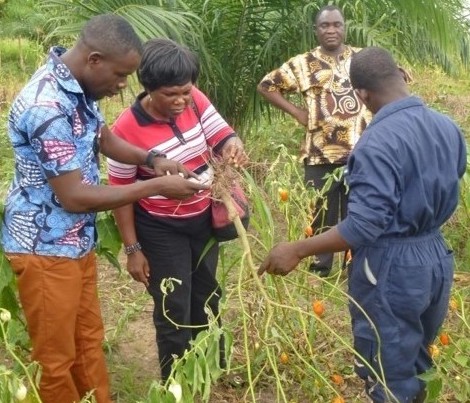Who We Are
The Plant Genetic Resources Research Institute (PGRRI) is one of the 13 research institutes under the Council for Scientific and Industrial Research (CSIR). The Institute was established in 1964 as a section of the Crops Research Institute (CRI) of CSIR and named Plant Introduction Exploration (PIE). In 1985, its name was changed to Plant Genetic Resources Unit (PGRU).
In August 1994 the Unit’s mandate was expanded and its status was elevated to that of a Centre within the CSIR and later to an Institute in August 2005 to reflect the scope of its activities and to conform to international designation of similar institutions.
Goal
To ensure the effective conservation and use of PGR for food security and sustainable agricultural development.
Mandate
The CSIR- PGRRI has the mandate to collect, characterize, evaluate, document, conserve, distribute and utilize plant genetic resources (PGR) from Ghana and abroad.
Objectives
-
To develop technologies for the efficient conservation and utilization of orthodox and recalcitrant PGR materials.
-
To strengthen human resource capacity and capability.
-
To identify, establish and strengthen inter-institutional collaborations and linkages.
-
To identify and access external donor funding and commercialize research results.
-
To gather, process and disseminate information relevant to PGR management in Ghana.
CSIR-PGRRI Structure
The activities at the CSIR-PGRRI are administered by the Director assisted by six divisional heads. The divisions are;
Dr. Daniel Ashie Kotey
Ag. Director
CSIR-PGRRI Research Programmes
This involves surveys, collecting, characterizing, evaluation, documentation, conservation, regeneration, distribution and utilization of legumes, cereals, vegetables, root and tubers, medicinal plants, fruit trees, spices and forest plant species
Research at the CSIR-Plant Genetic Resources Research Institute is focused on providing quality data to enhance the utilization of the genebank’s collection. Research priorities include;
- Characterizing and evaluating germplasm for morphological and key agronomic/ horticultural traits such as salt tolerance, disease / pest resistance.
- Expanding the genetic diversity in the collection through germplasm collections and acquisition.
- Developing and applying new molecular technologies for crop genetic structure and diversity analysis of priority crops.
- Distribution of germplasm to stakeholders to support educational, research, and breeding objectives.




